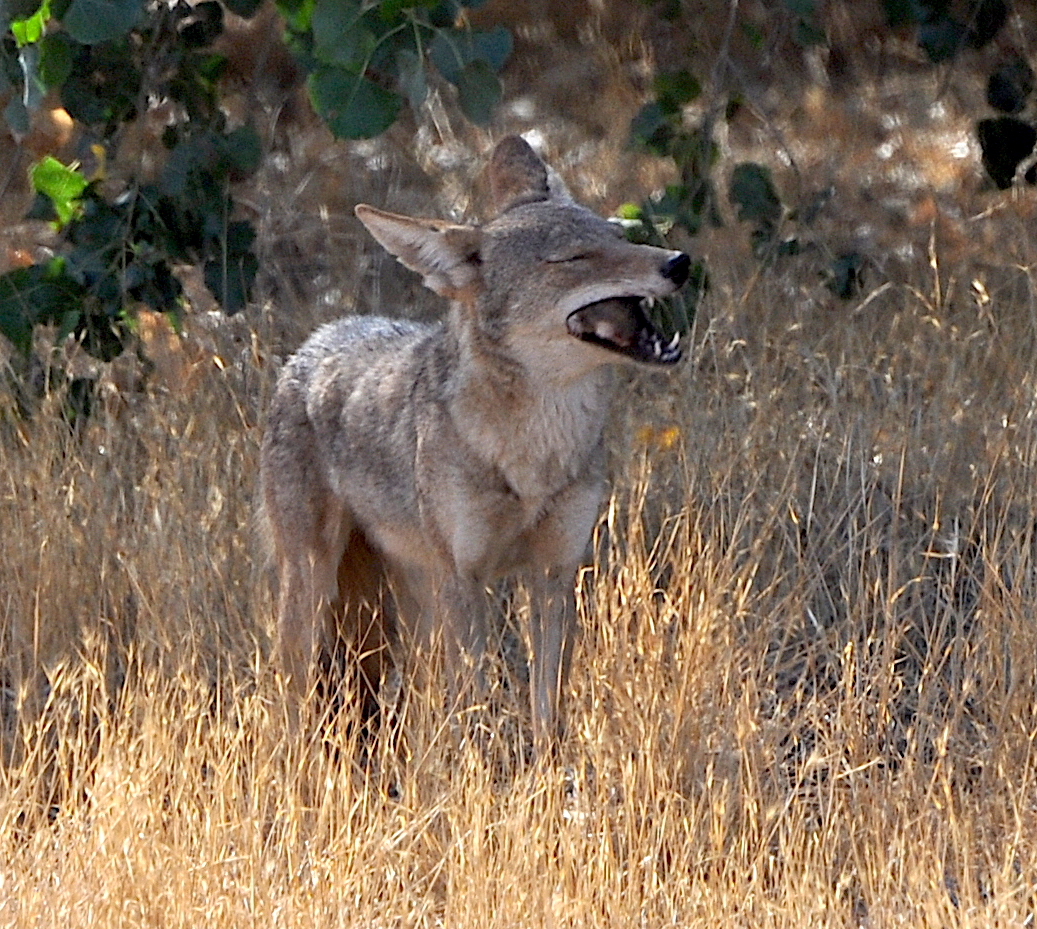The following animals have also been sighted on trailcam along the Kern River Corridor by Dr. Bryan Cypher: deer mouse, dusky-footed woodrat, black rat (a.k.a. roof rat), California vole, opossum, and striped skunk. However, no photos are available at this time. Citizen scientists are welcome to contribute photos of their sightings of these critters.
BEAVERS
Castor canadensis ssp. leucodenta (Gray Beaver) is the species of beaver found in California; twelve other species are found in North America. (USDA Forest Service)
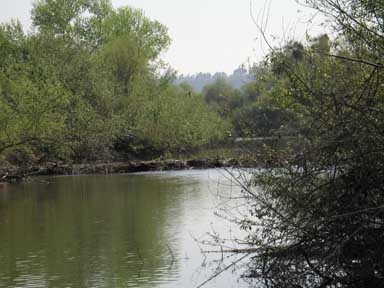
Beaver dam across the Kern on the Preserve in March 2007 ...
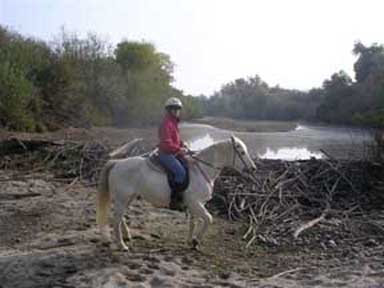
...and in November 2007
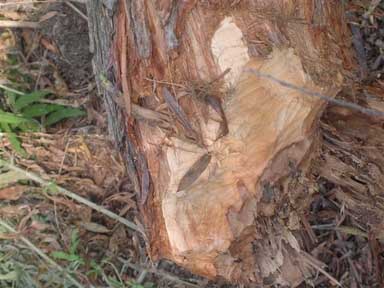
Beavers eat only the inner bark of trees such as this cottonwood. They carry branches from fallen trees off to their dams and eat the bark later. This tree fell over not long after this picture was taken. (Photo by Janis Freed)
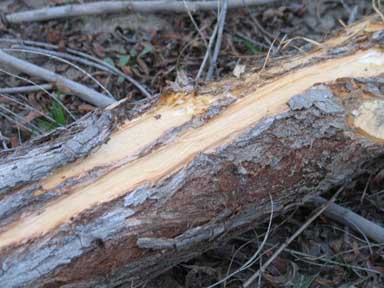
Bark has been peeled off in long strips by the beaver's large incisors. Beavers like willows as well as cottonwood, but they also eat a variety of aquatic plants.
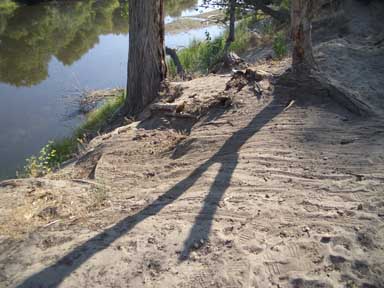
Drag marks of a beaver's tail or of tree branches.
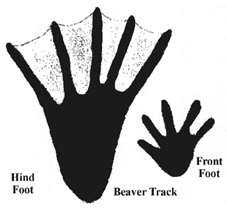
Source of this image: University of Nebraska Extension
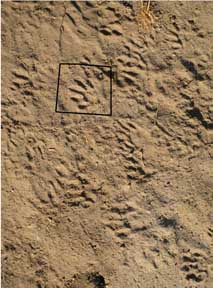
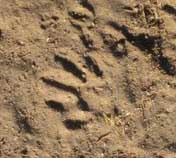
Animal tracks up the sand bank from the river. In the outline is a print which resembles the front foot track in the drawing on the right. (Photo by Marion Vargas)
BOBCATS
Lynx rufus californicus is one of a dozen species of bobcats found from Canada into southern Mexico.
In size, bobcats are about twice as large as the domestic cat (males 14-40 lbs, females 9-34 lbs). A yearling may weigh around 10 lbs. It has a distinctive gait because its hind legs are longer than its front legs.
In spring and summer it hunts during the early hours of dawn or at twilight but during fall and winter it may come out during the day because its prey are more likely out then if the weather is cold. It is strictly a carnivore and lives off rabbits, hares, mice, and other rodents, which may put it in competition with coyotes when their ranges overlap.
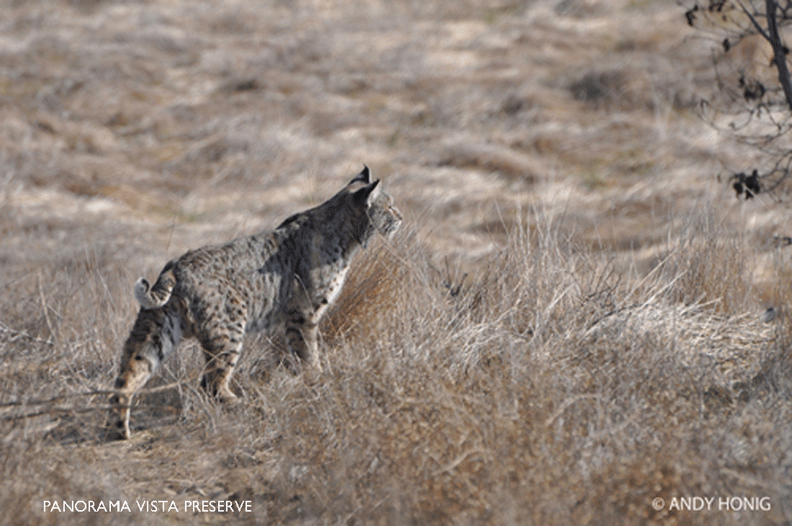
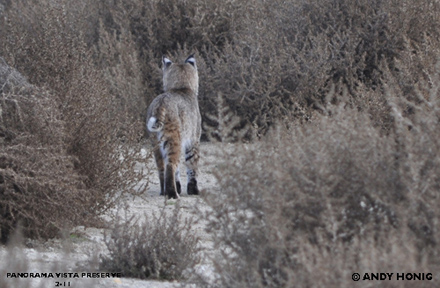
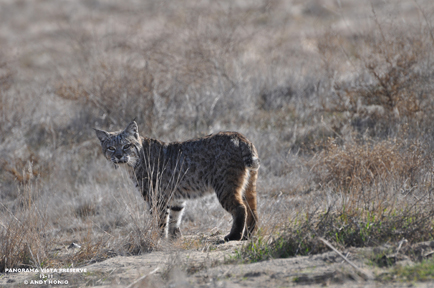
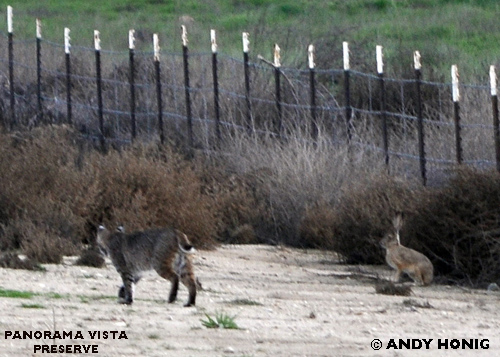
On a February day in 2011, Andy Honig was walking near the Beardsley Canal when he saw this bobcat. He quietly followed it, taking pictures for some distance through the salt bush. The cat was not particularly disturbed by the photographer but perhaps it was distracted just enough that she did not notice the jackrabbit as she passed by. At times she stopped and looked back. Her distinctively wide face and longer hind legs were easy to observe. In a short distance, the bobcat came to a hole in the fence and went through to the other side.
Later in 2011, Honig came across another bobcat strolling along. He followed it and eventually came to a fence; he expected it to go under, as before, but she surprised him.
In true feline style, she measured the distance to the top, jumped, and scrambled over. Honig and his wife checked the fence the next day to see if the cat lost any fur going over but found nothing. This fence has since been removed and animals can pass freely back and forth.
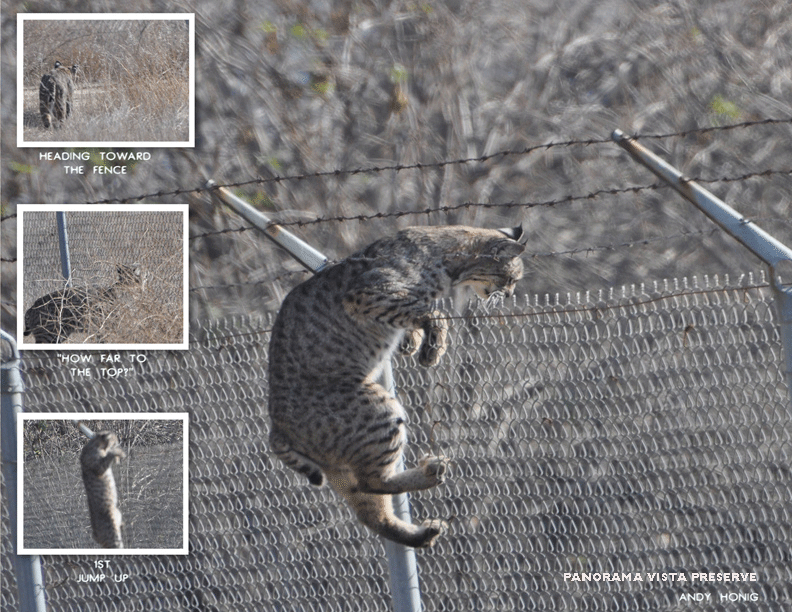
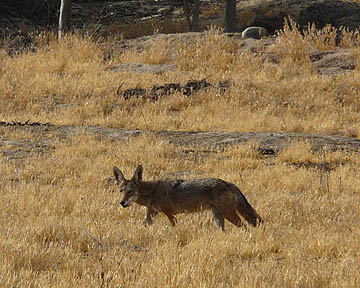
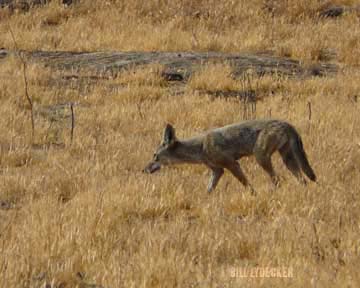
These two coyotes were spotted in a grassy field between the Kern River and the Carrier (Kern Island) Canal, early September 2008. A mother and two cubs were sighted several times in the same general area in the spring. Family members may travel together, as these two are. (Photos by Bill Lydecker)
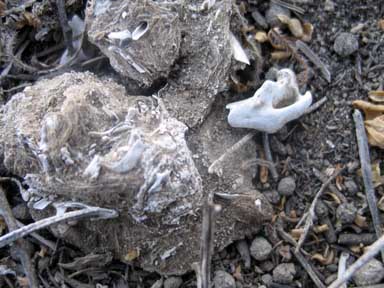
(Left) Scat and bones. This clump of coyote scat, which is lying on top of what appears to be rabbit droppings, has various tiny bones embedded in it -- a rabbit dinner one evening? (Right) There is plenty of fur in this scat.
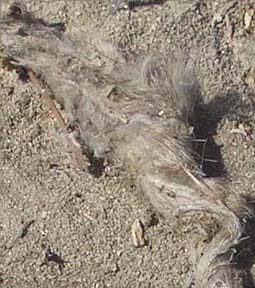
PAW PRINT COMPARISONS
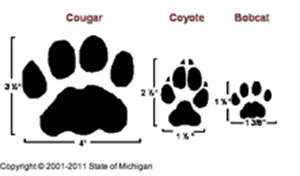
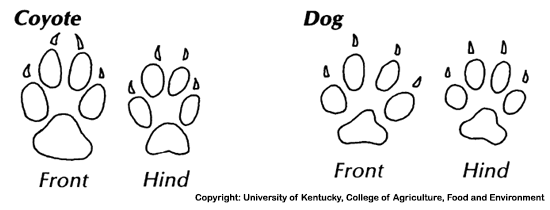
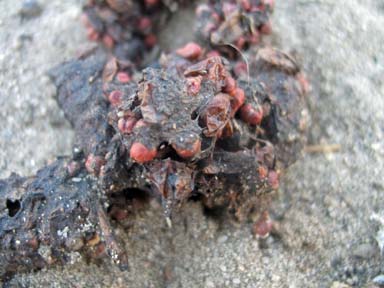
The "calling card" of, perhaps, a skunk or racoon. This scat is studded with small reddish seeds.
Updated August 9, 2013
© S. Honig
Photos are by Andy or Sasha Honig except where otherwise noted.
